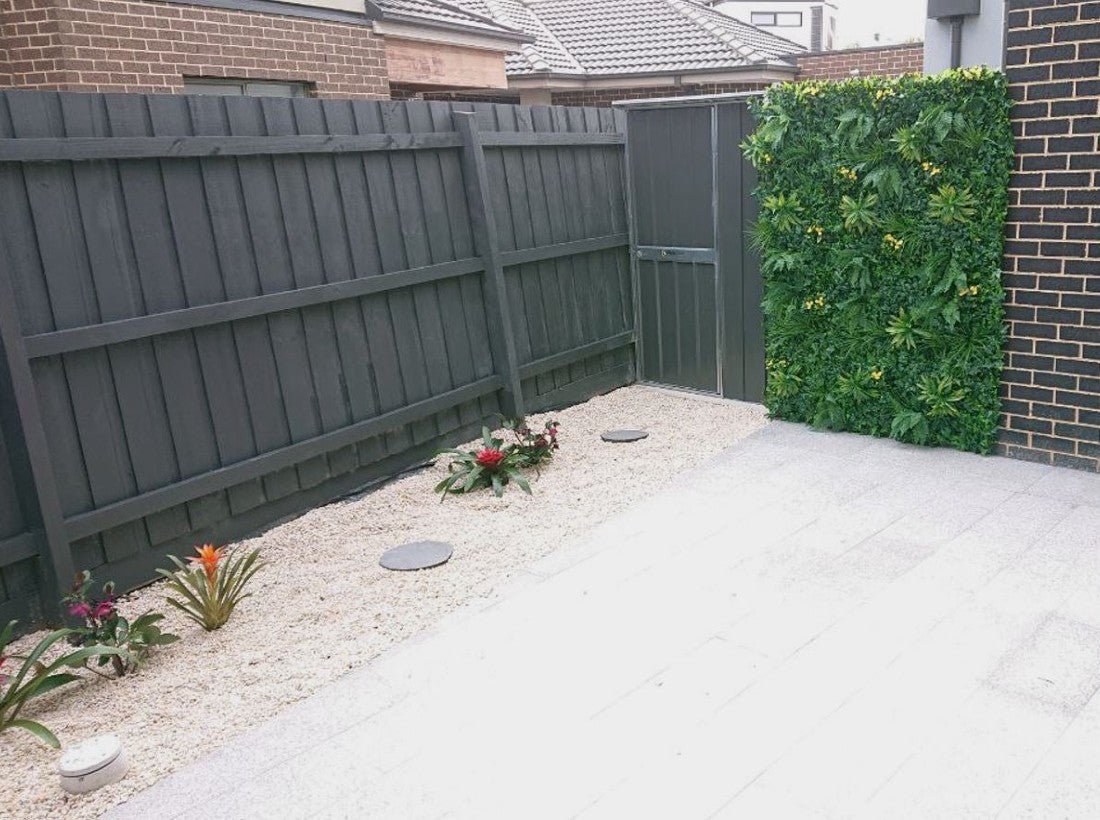So you’ve decided to decorate with a faux plant or two?
Welcome to the club - we hope you do your research!
Unfortunately, we’ve seen our fair share of buyers disregard their better judgment before decorating with artificial plants. While that approach may work for some, if you’re a novice to the world of faux foliage, you’ll leave much to be desired in your home decor.
And this is why we’ve put together a post to help you navigate these muddy waters and skip over the most common mistakes when decorating with artificial plants. That way, you’ll go straight to the good stuff.
Before you buy your first artificial plant, read this.
5 Mistakes to Avoid When Decorating With Faux Plants
We’re not hiding the fact that we’re proponents of artificial foliage - we love faux greenery!
But even we can tell you that buying the first faux plant you see and propping it somewhere random won’t get you the desired results. Instead, it makes things look worse.
So, here’s what you should avoid when decorating with artificial plants:
Buying Low-Quality Faux Plants
We like to think that gone are the days when you could pinpoint an artificial plant from a mile away. Unfortunately, those days are still here, albeit they’re not as common.
The point of buying and decorating with artificial plants is to trick the eye into believing they’re real. It’s not to shout about their fakeness from the rooftops. To do this, you’ll need to consider the quality of the artificial plant.
If you’re pinching pennies, you might want to buy the cheapest artificial plant available just so you could have something to look at. But we implore you to reframe this way of thinking because it’s the exact reason you’ll get a tacky and shiny plastic plant that’s not fooling anybody.
A low-quality faux plant may help you save money in the short term, but you’re ultimately working against yourself in the long run.
So, don’t fall into this trap - research high-quality artificial plants and decide on the best choice based on that. If possible, order some samples and test them out before committing.
Forgetting to Clean Them
Just like all your other home decor elements, artificial greenery gathers dust. This will dull its shine, making it seem cheap and tacky.
If you want your faux foliage to look its best, clean it regularly. Of course, regularly can mean different time frames for different plants in different settings. So, pay attention to when dust settles on the leaves. Is it after a week of not cleaning? 2 weeks? A month?
Then, organize your time so that you’ll clean the leaves before they accumulate too much dust and dirt. That way, you’ll prevent buildup and ensure your faux foliage remains spotless. And the best part is - you only need a microfiber cloth and a shower head to clean even the most lush faux green wall.
Going All Faux
How many fake plants are too many?
Well, if all the plants in and around your home are artificial, that’s too many. You shouldn’t have only faux foliage in your home. People can tell.
If you have an innate tendency to over-decorate, make sure you use both artificial and natural greenery. This will break up the room and make it harder for discerning eyes to notice your artificial greenery. What’s more, this will help your faux foliage blend in instead of stand out.
On the other hand, if you go overboard with artificial, you’ll soon find yourself overwhelmed by the decor in your room. And nobody wants visitors to feel that way.
Not Matching the Decor
Your Scandinavian-inspired abode doesn’t do it for you anymore?
Are you chomping at the bit for a complete overhaul?
While we’ll never tell you that shuffling things around and renovating isn’t a good idea, we will caution you about the extent of it. It helps to think about the theme and color palette of your room before you buy your faux plants.
So, look at your aesthetic - what do you want to channel with your decor? When you get a clear idea, move on to the specific decor elements.
For example, if you want a casual environment, you can include artificial hanging plants with trailing vines and wispy leaves. On the other hand, for a sophisticated and elegant design, you can opt for faux topiary balls to provide symmetry and poise.
In any case, start with the fundamentals (the existing decor) and then build on that.
Putting Them Where the Sun Doesn’t Shine
Plants can brighten up dark rooms and corners in a heartbeat. Artificial plants can do that, too. But it seems that, for many, this means placing their faux foliage in a dingy room with little to no sunlight.
While this won’t damage your artificial plant because it doesn’t need sunlight in the first place, it will be a dead giveaway that the plant isn’t real.
A good rule of thumb is to put your artificial foliage where you would your natural greenery. The good thing is that even with a lack of light, a faux plant is much more forgiving and won’t hold it against you by wilting or withering. Still, we recommend placing your fauxliege in locations that get at least some sun so that they look more realistic.
Are Faux Plants Tacky?
Faux plants are not tacky by themselves, but some can be.
Usually, you can find tacky artificial plants at department stores or retailers with laughable prices. Low-quality faux plants can look tacky due to the materials they’re made of, their shininess, their placement, and the care the owner puts into them.
If you buy your artificial plants from a manufacturer or supplier that offers warranties and documents confirming quality, you won’t have tacky fauxliege.
Finishing Thoughts
Now that you’ve seen the most common mistakes when decorating with artificial plants, you’ve got the tools needed to do the job well.
If you steer clear of these faux pas, you’ll decorate your home the right way, without creating an eyesore you don’t know what to do with.


